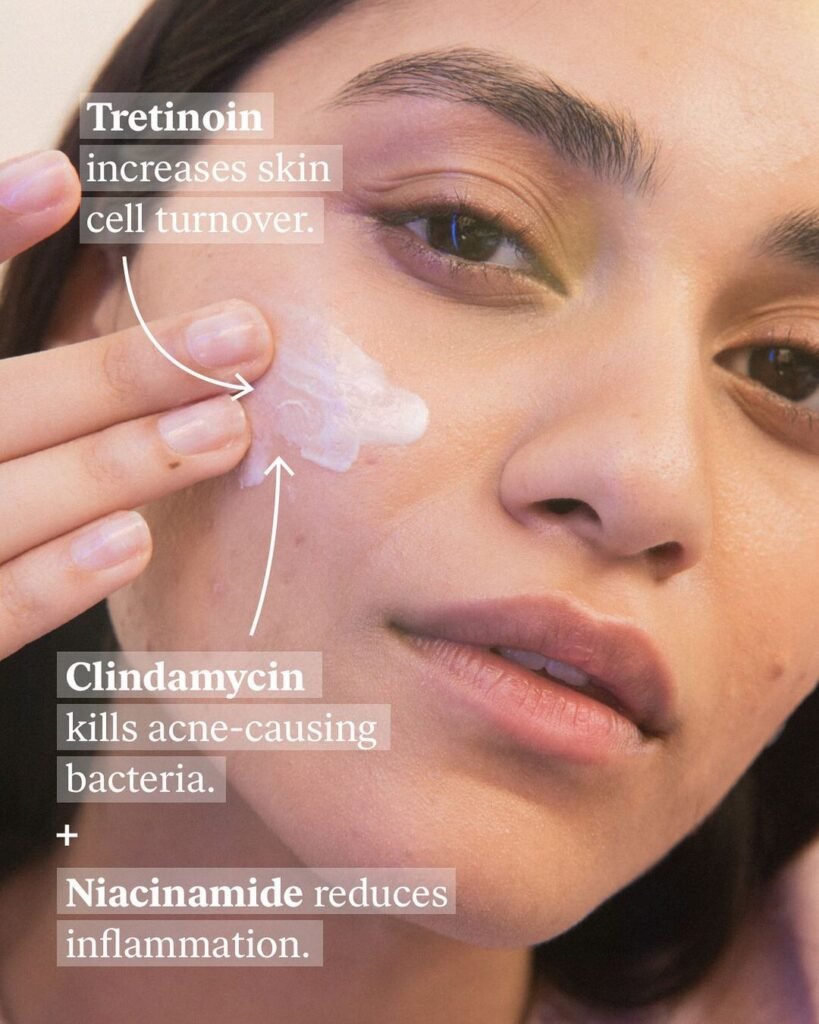The combination of hyaluronic acid and clindamycin can be very effective in the treatment of acne.
While this combination is not common, it can yield great results for those who need both products.
Can You Use Hyaluronic Acid and Clindamycin Together?
You can use hyaluronic acid and clindamycin together, but it’s important to know that they are both topical medications.

Hyaluronic acid works to reduce the appearance of fine lines and wrinkles.
It does this by increasing the amount of collagen in your skin.
On the flip side, clindamycin is a topical antibiotic that treats bacterial infections on your skin.
Hyaluronic acid is an anti-aging treatment that increases collagen production, which can help give you smoother skin as well as improve wrinkles and fine lines.
Because it does not penetrate into your bloodstream or other tissues inside your body (like antibiotics do), there are minimal side effects associated with using this medication topically on the surface area of your face.
Clindamycin is a topical antibiotic that treats bacterial infections on your skin by killing off bacteria so they don’t remain in one place long enough to cause issues like acne breakouts or pimples that could leave scars behind when healing occurs afterward.
How to Use Hyaluronic Acid and Clindamycin Together
Hyaluronic acid and clindamycin are two popular ingredients in anti-aging products.
Although they work well on their own, they can also be used together to create a powerful anti-wrinkle solution.
Here’s how to use them both:
1. Cleanse your face
Cleanse your face with a gentle cleanser. Pat dry with a clean towel.
2. Apply a toner or astringent
Apply a toner or astringent to remove any residue from the cleanser.
3. Apply hyaluronic acid
Apply hyaluronic serum or cream over your entire face and neck using upward strokes.
4. Apply clindamycin
Wait 10 minutes for the product to absorb into your skin before applying clindamycin gel or cream over your entire face and neck using upward strokes.
5. Allow time for both products to absorb
Allow time for both products to absorb into your skin before applying makeup or sunscreen for daytime use or moisturizer for nighttime use.
What Skincare Can You Use With Clindamycin?

There are several skincare products you can use while using clindamycin.
These include:
1. Lotions and gels
Creams and lotions made for treating acne provide a thin layer of medication on your skin to keep it moist and prevent dryness.
You should always wash your hands before applying any acne medication, including clindamycin, to avoid transferring bacteria from your hands to your face.
2. Toners and astringents
These products are designed to cleanse excess oil from the skin without drying it out too much.
They also help remove dead skin cells, which can clog pores and lead to acne breakouts.
You should avoid using astringents if you have sensitive or damaged skin because they may irritate it further.
3. Sunscreens
Sunscreens are an important part of any skincare routine because they protect against sun damage that can lead to wrinkles or hyperpigmentation (dark spots).
What Can You Not Take With Clindamycin?
Blood Thinners
Clindamycin can interact with blood thinners, such as aspirin and warfarin.
If you’re on one of these medications, you should let your doctor know before taking Clindamycin.
While you may be able to take an alternative antibiotic that won’t interact with your blood thinner, talk to your doctor about how this will affect the dosage of your medication.
Since there is a risk for bleeding when taking these medications together and since the interaction varies between individuals, it’s important that you get advice from a medical professional before making any changes in treatment plans or doses of medication.
Antibiotics
Antibiotics are medicines that kill bacteria but they don’t work on viruses or other infections (like colds).
Clindamycin works best against bacteria but not as well against viruses and other infections like colds or influenza (the flu).
Final Thoughts
Remember to talk to your doctor if you’re thinking about starting a new medication or supplement.
They can help you weigh the risks and benefits of taking both medications together.


